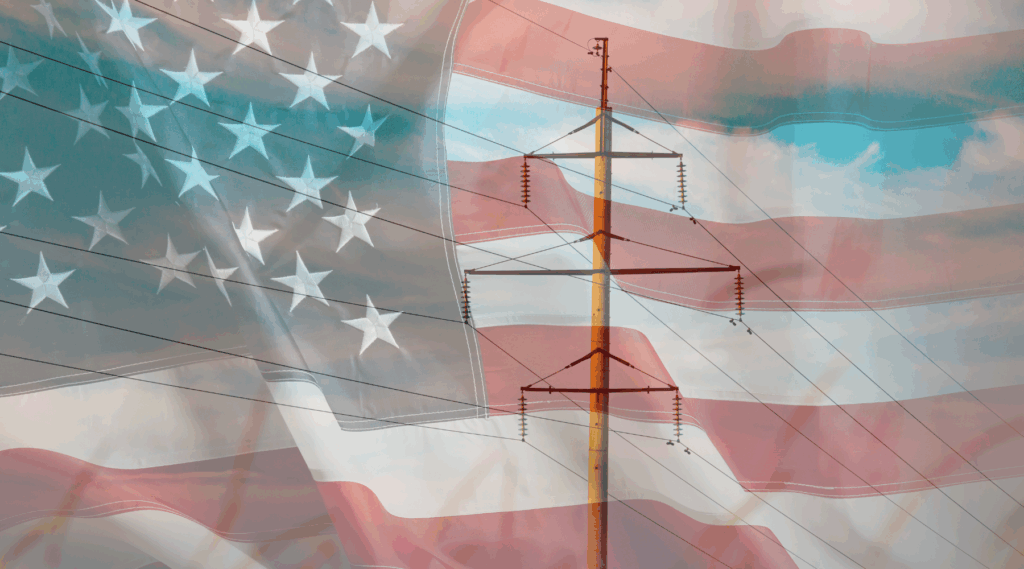
Earlier this summer, I had the opportunity to visit the Big Cedar Industrial Park in Cedar Rapids, Iowa, future site of Google’s $7 billion data center. I saw firsthand the progress being made by teams from ITC Midwest and Alliant Energy. This visit was a powerful reminder of the collaboration and innovation required to meet the nation’s growing energy demands and the critical role transmission plays in making it all possible.
Between advancements in artificial intelligence and unprecedented load growth, the current moment presents us with a unique opportunity — and a responsibility — to build a more resilient, interconnected grid. If the United States aims to lead globally in energy and maintain its economic prowess, now is the time to make grid expansion and modernization a priority.
Investing in transmission infrastructure allows us to unlock domestic energy resources at scale and lead in innovation, reliability and resilience.
Meeting Increasing Demand
A key piece of an “all of the above” energy strategy, transmission supports domestic energy production by interconnecting new generation sources.
This continues to be especially important as electricity demand surges. A recent report from the Department of Energy estimates an additional 100 GW of new peak hour supply is needed by 2030, half of which is attributable to data centers. The more expansive and interconnected our grid becomes, the more efficiently we’ll be able to meet this demand and prepare for future needs.
Supporting Innovation and Economic Growth
As the U.S. partakes in the AI “arms race,” transmission will play a key role in delivering energy to data centers across the country and driving needed innovation. By 2030, data centers could consume up to 9% of U.S. electricity generation, twice as much as in 2024. This increasing demand, spurred also by global AI competition with China, will require significant investment in the U.S. grid, especially to match the record investment from China in its own power grid.
Beyond the needed innovation and infrastructure for the AI race, transmission is critical for yet another objective: reshoring manufacturing. In addition to creating hundreds of thousands of jobs in its own right, transmission infrastructure supplies American industries and customers with more reliable, low-cost electricity by enabling access to less expensive generation.
Ensuring Security and Stability
Investment in a modernized and more interconnected power supply now also fortifies and protects the grid from national security threats, extreme weather events and future uncertainties. Transmission and grid resilience are some of our best defenses against both natural and manmade disasters, including cyber or physical attacks. As geopolitical conflicts raise national security and cybersecurity concerns, the buildout of transmission infrastructure is more important than ever. Beyond insulating from specific threats, our transmission infrastructure enables reliable, stable power for homes and businesses throughout the country. By investing now, we’re ensuring this reliability for generations to come.
Forging a Path Forward
The role transmission will play in meeting the current moment and securing America’s energy future cannot be overstated. Despite this, a number of barriers to infrastructure buildout remain. Markets are fragmented. Permitting issues and red-tape delay projects that are already operating on a lengthy 7-10 year timeline. Unlocking our energy future through transmission infrastructure will require policy changes and recognition of the investment needed.
Existing policies that promote an “all of the above” energy approach and support transmission investment must continue to do so. Policy at all levels should also work to streamline transmission projects, through comprehensive permitting reform and solutions such as Rights of First Refusal (ROFR). ROFR provides certainty around project development, promotes reliability through local expertise and presence and allows for more proactive, long-term planning as our nation’s energy needs evolve.
When determining America’s energy future, leaders must prioritize decisions that promote — not hinder — transmission development. As we modernize our aging grid in the pursuit of energy independence, we also are working to protect against future threats, keep costs down for communities, and support economic growth. With a rapidly evolving energy landscape, we must act quickly to secure this future.

